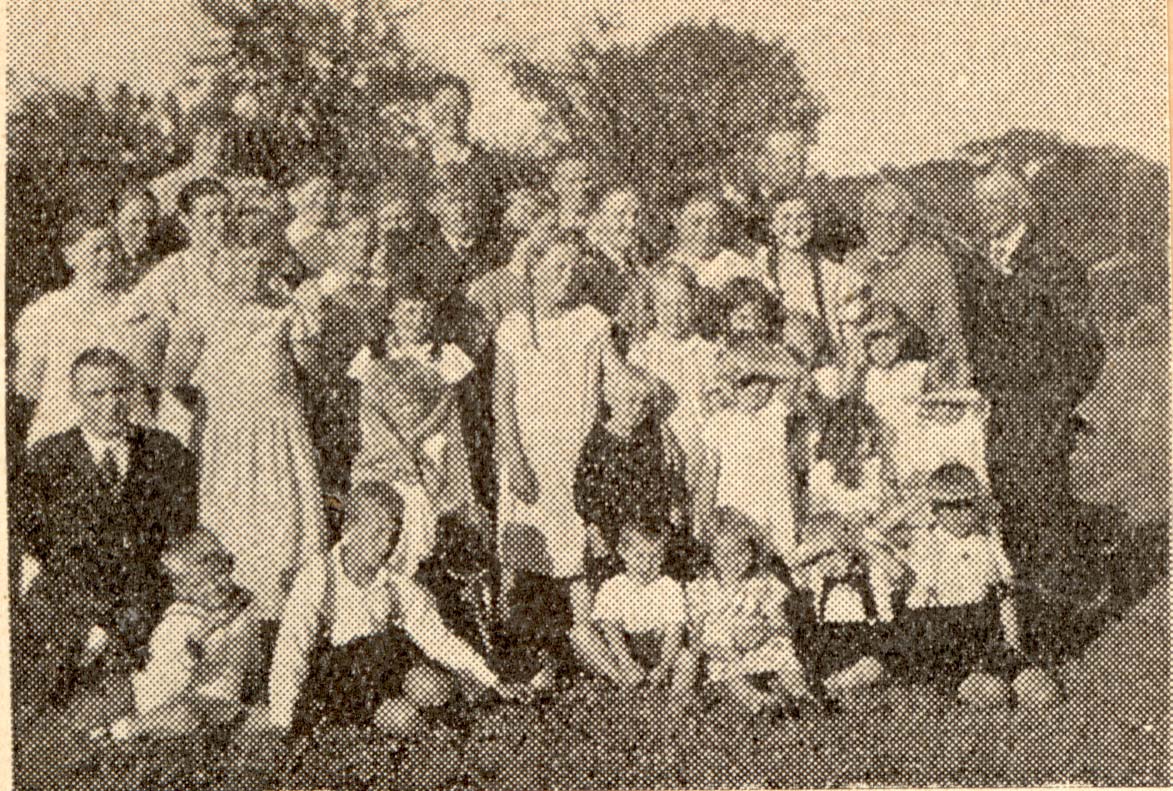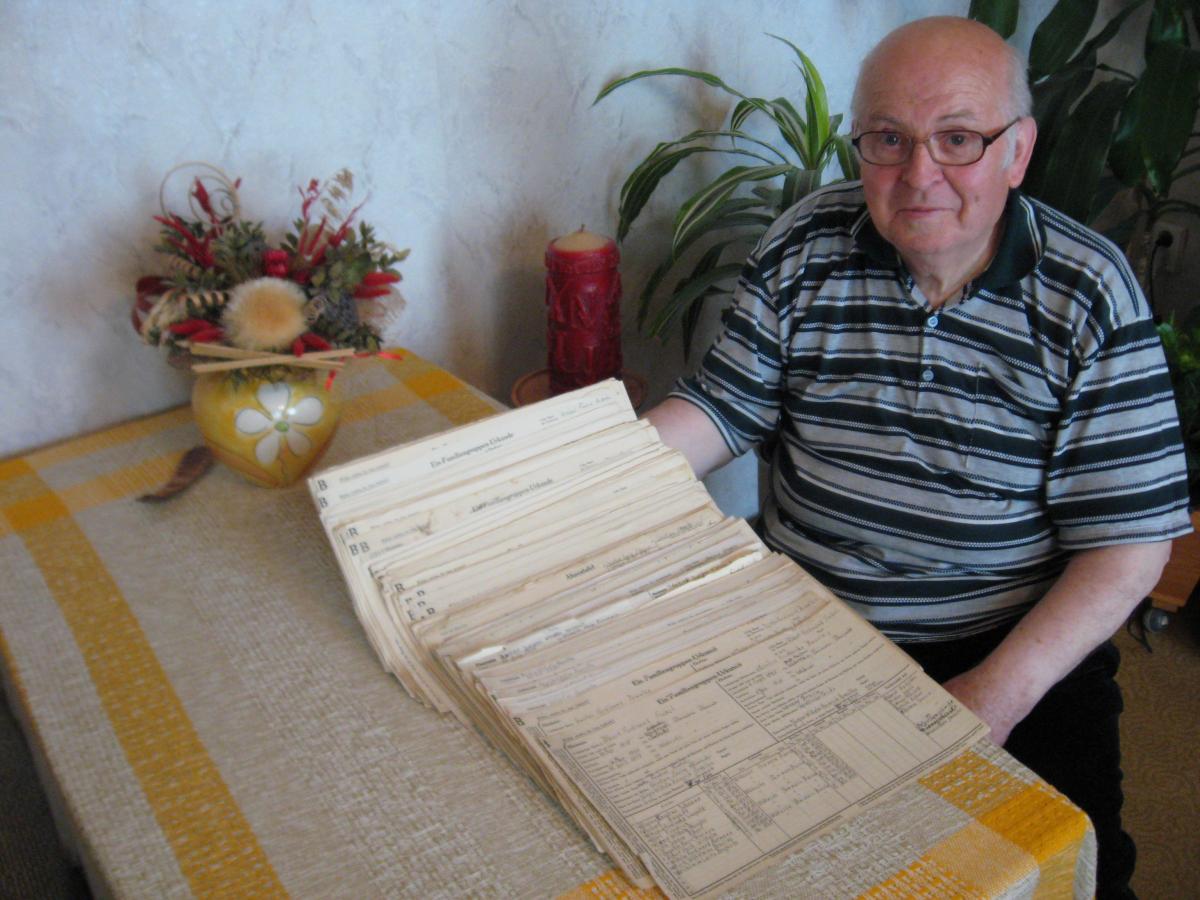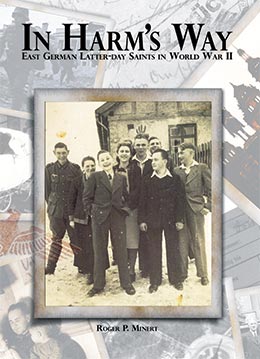Wobesde Branch, Danzig District
Roger P. Minert, In Harm’s Way: East German Latter-day Saints in World War II (Provo, UT: Religious Studies Center, Brigham Young University, 2009), 220-4.
The members of the Wobesde Branch of The Church of Jesus Christ of Latter-day Saints must have felt quite isolated. Theirs was the only branch of the Church for miles in any direction, being about 130 miles east of Stettin and 65 miles west of the Free City of Danzig, the center of the Church district to which Wobesde belonged. To attend district conferences, the members from Wobesde had to first cross the border into Poland, then cross another border into Danzig. Jürgen Pawelke (born 1929) remembered making the trip to Danzig: “As we passed through the Polish Corridor, we had to close the windows and shut the blinds in the train.”[1]
| Wobesde Branch[2] | 1939 |
| Elders | 3 |
| Priests | 0 |
| Teachers | 1 |
| Deacons | 5 |
| Other Adult Males | 3 |
| Adult Females | 21 |
| Male Children | 1 |
| Female Children | 3 |
| Total | 37 |
Jürgen described the setting for Church meetings at home in Wobesde:
At the beginning of the war in 1939, we met in Sister Marie Kutschke’s home. Her husband was not a member. She had a fairly large living room where we could all meet. At that time, our branch had 33 [37] registered members and about 45 people attended the meetings. We did not have a problem to find some space to sit, and we were all very comfortable. We held our meetings there until the end of the war. Our branch president was Hermann Heise.[3] We had our Sunday School at 10:00 a.m. and our sacrament meeting at 6:00 p.m. on Sundays. We also held a teachers improvement meeting, Relief Society, and Primary during the week—all at the Kutschke home.
Jürgen’s sister, Brigitte (born 1935), recalled the following about the family’s attendance at Church meetings:
In the morning, we had Sunday School and then in the evenings, our sacrament meeting. My parents made sure that all of their children went—there was no excuse. During the week, we held the other meetings, but I cannot remember that my parents went very often because we lived a little ways from the town.[4]
The fact that there were more persons attending the church meetings than were registered members of the Church may seem like the results of an enthusiastic missionary effort. However, there was always the possibility that some of the visitors had ulterior motives. As Jürgen expressed later, “We also had to be careful because we were not sure if somebody was watching us or not. There were more people attending than were registered, and we never knew if those watching were friends or not.”
In 1939 (when he turned ten), Jürgen Pawelke was inducted into the Jungvolk with his classmates, but he was not enthusiastic about the program. Fortunately, his work on the family farm (about one mile from town) prevented him from attending the meetings, and nobody caused him any trouble about that. His father had been drafted at the onset of the war, leaving Jürgen as the man on the farm, but his father was released very soon and came back to assist with the farm work. Their main daily task was to collect and transport 120–40 cans of milk (each about five gallons in volume) by wagon to Stolpmünde, six miles to the west.
 Members of the Wobesde Branch in the early war years (W. Kindt)
Members of the Wobesde Branch in the early war years (W. Kindt)
The Pawelke family lived in an area populated by both Germans and Poles. To children unaware of politics and world events, it mattered little who was who. According to Brigitte, “As a child, I always played with my cousin, and we also played with the Polish children. We did not have any problems. The Polish had their own traditions when it came to playing, and we were also allowed to use what they had.”
Conducting baptismal ceremonies was an adventure in the Wobesde Branch. According to Jürgen Pawelke, the members walked a mile or two to the coast of the Baltic Sea, and three persons waded out to a spot that was sufficiently deep. He explained: “The third person was there to prevent anybody being carried away by the current. Sometimes, young people would follow us and make fun of us, but we didn’t have to do it in secret.”
Jürgen participated in the religion course at school when he and his classmates approached the age of fourteen, the age at which most Lutheran youth are confirmed in their church. The pastor who conducted the catechism course praised Jürgen and other Latter-day Saint youth, because, as Jürgen recalled, “we were his best students because we already knew everything he wanted us to learn.” The pastor also commented that he wished he would see as many members of his church in his services as the Mormon branch president saw in his.
A small branch in Germany during the war had a bit more flexibility than a large branch when it came to scheduling meetings. Jürgen recalled the following:
We had many activities in our branch. When there was nice weather, we went to a member’s home that was close to a forest, and we held our Sunday School and our sacrament meeting in that forest. We never asked anybody for permission. We always sang hymns. At the beginning, we did not have any instruments, but my uncle had a violin with which he gave us the starting note. During the war, we also bought an organ, and I even received some lessons, and I tried to play some songs. Later, we had a sister from Danzig, Rose Eichler, who stayed with us, and she accompanied us during the war.
Rose Eichler (born 1930) had been sent to Wobesde as part of the general effort to evacuate children from Danzig as the air raids against the port increased in frequency and severity. She was quite happy in the little town and enjoyed attending church with the branch there. “Meetings were held in Aunt Kutschke’s house,” she wrote. Her MIA teacher was a young lady named Gerda Hoeppner. “I just loved her. I always thought that she was so close to being perfect. When I was with her, it always made me feel that I wanted to be good and to improve myself.”[5]
As was true with many rural communities in Germany, Wobesde did not suffer from the direct effects of the war until the last few months of the conflict. According to Jürgen Pawelke,
We never had a disruption in our church meetings until the end of the war. The Russians came into our area on March 9, 1945, a Friday, and the following Sunday we did not have our meetings, but the week after that everything was back to normal. Wobesde was not damaged during the invasion. After that, our branch [leaders] advised the women to never go alone.
In the weeks following the arrival of the Red Army in Wobesde, the danger of women being assaulted was severe. According to Jürgen Pawelke, “We always hid about forty [women from Wobesde] at night since we lived on a farm a little ways from the town.”
Rose Eichler visited her parents in Danzig one last time in early 1945. Her parents decided that she would be safer back in Wobesde, so she returned, making the entire trip by herself at the age of fourteen. As it turned out for the entire family, she was no more or less safe in either location. The danger she faced in Wobesde when the invaders arrived on March 8, 1945, was a kind of mental torture. For months, she lived in constant dread of physical abuse.[6]
Brigitte was only ten years old when enemy soldiers stormed through the town. She probably had no idea why the soldiers ransacked the houses searching for women and girls, but she was frightened nevertheless:
One night, I thought that I would not survive, when a Russian soldier broke open the door and I was lying in bed. He told us that he wanted the girls to come with him and if we did not obey his command, he would do something horrible to us. The first thought that we had was to pray and each person said his or her own prayer. A little later, an officer came inside and threw the soldier out. He apologized for his behavior. I never forgot that experience.
Hiding in every possible nook or cranny, Rose Eichler and other members of the Wobesde Branch wept and prayed constantly as marauding Soviet soldiers searched for female victims among the local population. Time and again, Rose was within a few feet of disaster, and she soon concluded that chance was not the reason for her escape:
The first time something like this happened, or the second time, or even the third, you could have thought this was coincident that we were not found. But I’m certain this was not the case, for it happened over and over again. I’m sure that it was Heavenly Father who heard and answered our prayers.[7]
Rose and her friends became experts in stealth, quickly learning how best to escape the omnipresent soldiers. Although the women stayed inside two specific buildings for one month each, there were many occasions when they ran through fields of grain or sought refuge in the cemeteries “that the superstitious Russians [soldiers]” would not enter (“at night we were superstitious too, and we didn’t want to go and hide there”).[8]
During the summer of 1945, some of the Wobesde Saints contracted frightful skin conditions—likely a result of their poor food supply. Rose later wrote of the sufferings:
We would break out with pus-filled blisters all over. I remember waking up one day and part of my hand was all covered with small, pus-filled blisters. Others had other types of sores all over them. And the Russians brought lice in, and we didn’t know how to get rid of them. Somebody decided we would use kerosene oil and we put that on our heads. It killed the lice all right, but it nearly killed us too![9]
 Jürgen Pawelke holds the many family group records his mother took along when the family was forced to leave their farm in 1947. (J. Larsen, 2007)
Jürgen Pawelke holds the many family group records his mother took along when the family was forced to leave their farm in 1947. (J. Larsen, 2007)
When the Polish took over the territory around Wobesde, Rose and her friend Ruth Pawelke were forced to work as cleaning women in a police station. One day, they were beaten severely with a rubber club with apparently no provocation. The next day, they were able to attend a fast meeting with surviving Saints in a schoolhouse. Tears streamed down their faces as they bore testimony. “I can still feel that,” Rose wrote years later:
There was this feeling that we were completely in their power. They could take everything away from us; they could hurt us; they could beat us; they could even kill us if they chose to. But there was one thing they couldn’t touch, and that was our faith.[10]
In the fall of 1945, Ernst Eichler was asked by the leaders of the East German Mission to return from Berlin to Danzig in search of Saints needing help to evacuate the area. As part of his dangerous rescue mission, he made his way to Wobesde where he found his daughter, Rose. Brother Pawelke took them by wagon to Stolp, where they boarded a train for Germany (in the meantime, Brother Eichler had gone off in search of other Saints). On the way, the Saints witnessed several terrifying events and a great deal of suffering. Finally arriving at the mission home in Berlin, they were welcomed and cared for then sent south to join the colony of Latter-day Saint refugees at Wolfsgrün, where Rose saw her mother for the first time in nearly a year. Soon, all of her sisters were located and the Eichler family was reunited.[11]
Just as other ethnic Germans living in and near Wobesde, the Latter-day Saints of the Wobesde Branch were soon expelled from what had become Polish territory in 1945. For the Pawelke family, the move took place on Jürgen’s eighteenth birthday, July 27, 1947. The Polish mayor had informed the family the night before that they must prepare to leave. They dressed in several layers of clothing and took all of their Church literature. This included more than one hundred family group records prepared by a Brother Czerwinski of the Elbing Branch. The Pawelkes were sad to leave the farm that they had worked so long, but they had no choice. Life there had become intolerable.
“Even though the war was difficult, the Church was always a center of attraction for us,” explained Brigitte Pawelke regarding the importance of the Church to its members. Brigitte was eleven when the order came to leave Wobesde. She recalled the process vividly:
When we left, we were first taken to Stolp on a wagon pulled by horses. We could take whatever we could carry. Then we boarded a train in Stolp and stayed in a wagon that was used for animal transportation before. We had some straw and some blankets. It was a very long trip. We did not go through every station automatically. We had to wait before somebody let us through, and the food was terrible—if we even had any at all.
The Pawelkes rode the train to Germany, first to Forst on the Neisse River then to Anneberg by Torgau. With their departure, the Wobesde Branch passed into history.[12]
In Memoriam
The following members of the Wobesde Branch did not survive World War II:
Artur Fritz Ferdinand Gennrich b. Wobesde, Stolp, Pommern, Preussen ca. 1923; son of Albert Richard August Gennrich and Meta Elisabeth Puttkammer; bp. 8 Aug 1937; m. 1945; k. in battle 1945 (R. Eichler; IGI; J. Pawelke)
Erwin Franz Wilhelm Lawrenz b. Wobesde, Stolp, Pommern, Preussen 20 Apr 1922; son of Karl Max Wilhelm Lawrenz and Marta Herta Auguste Franke; bp. 8 Aug 1937; soldier 28th Jäger Division; k. in battle H.V. Pl. Utschno Sanko 5, Russia 18 Aug 1942; bur. Korpowo, Russia (Sonntagsgruss, no. 20, Oct 1942, 80; R. Eichler; J. Pawelke; IGI; www.volksbund.de)
Heinz Ewald Lawrenz b. Wobesde, Stolp, Pommern, Preussen 12 Jan 1921; son of Karl Max Wilhelm Lawrenz and Marta Herta Auguste Franke; soldier; k. in battle 1942 (Sonntagsgruss, No. 20, Oct 1942, 80; R. Eichler; J. Pawelke; IGI)
Horst Herbert Voge b. Schneidemühl, Preussen 15 Dec 1921; son of Emil Otto Voge and Alma Olga Riewe; bp. 15 Dec 1929; d. Lauenburg or Schneidemühl, Pommern, Preussen 20 Mar 1940 (Sonntagsstern, no. 17, 26 May 1940, n.p.; IGI; AF)
Notes
[1] Jürgen Pawelke, interview by the author in German, Halberstadt, Germany, May 31, 2007. Unless otherwise noted, summarized in English by Judith Sartowski.
[2] Presiding Bishopric, “Financial, Statistical, and Historical Reports of Wards, Stakes, and Missions, 1884–1955,” CR 4 12, 257.
[3] According to official records, the branch was still meeting there in January 1943. East German Mission, “Directory of Meeting Places” (unpublished MS), January 31, 1943; private collection.
[4] Brigitte Pawelke Prautzsch, telephone interview by Judith Sartowski, February 25, 2008; transcript/
[5] Rose Eichler Wood, autobiography (unpublished), 11; private collection.
[6] Ibid., 15–16.
[7] Ibid., 17.
[8] Ibid., 18.
[9] Ibid., 21.
[10] Ibid., 22.
[11] Ibid., 23–25.
[12] The Polish name of Wobesde is Objazda.
